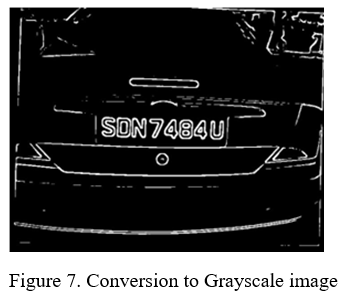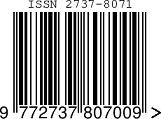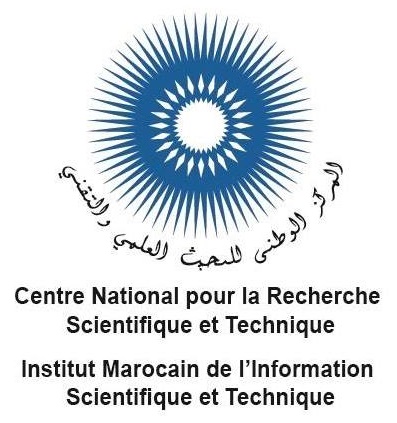Recognition and Detection of Vehicle License Plates Using Convolutional Neural Networks
Keywords:
Intelligent Transportation system , Vehicle License Plate Recognition , Convolutional Neural Network , You Only Look Once (yolo), Optical Character RecognitionAbstract
The rise in toll road usage has sparked a lot of interest in the newest, most effective, and most innovative intelligent transportation system (ITS), such as the Vehicle License Plate Recognition (VLPR) approach. This research uses Convolutional Neural Networks to deliver effective deep learning principally based on Automatic License Plate Recognition (ALPR) for detection and recognition of numerous License Plates (LPs) (CNN). Two fully convolutional one-stage object detectors are utilized in ALPRNet to concurrently identify and categorize LPs and characters, followed by an assembly module that outputs the LP strings. Object detectors are typically employed in CNN-based approaches such as You Only Look Once (YOLO), Faster Region-based Convolutional Neural Network (Faster R-CNN), and Mask Region-based Convolutional Neural Network (Mask R-CNN) to locate LPs. The VLPR model is used here to detect license plates using You Only Look Once (YOLO) and to recognize characters in license plates using Optical Character Recognition (OCR). Unlike existing methods, which treat license plate detection and recognition as two independent problems to be solved one at a time, the proposed method accomplishes both goals using a single network. Matlab R2020a was used as a tool.
Downloads
References
Irina Valeryevna Pustokhina, Denis Alexandrovich Pustokhin, Joel J.P.C. Rodrigues, Deepak Gupta et al. “Automatic Vehicle License Plate Recognition Using Optimal K-Means with Convolutional Neural Network for Intelligent transportation Systems”, IEEE Access, vol.8, pp.92907-92917, 2020.
P. Geetha, B.Senthil Kumar, H.D.Praveena, K.Sudha, “Modeling of hollow cylinder for carbon absorption,” Solid State Technology, vol. 63, Issue No.06, pp. 12667-12673, Dec 2020.
K. Yamaguchi, Y. Nagaya, K. Ueda, H. Nemoto, and M. Nakagawa, “A method for identifying specific vehicles using template matching,” in Proc. IEEE Int. Conf. Intell. Transp. Syst., pp. 8–13, 1999.
Q. Zuo and Z. Shi, “A real-time algorithm for license plate extraction based on mathematical morphology,” J. Image Graph., vol. 8, no. 3, pp. 281–285, 2003.
L. Salgado, J. M. Menendez, E. Rendon, and N. Garcia, “Automatic car plate detection and recognition through intelligent vision engineering,” in Proc. IEEE Int. Carnahan Conf. Security Technol., pp. 1–76, 1999.
H.D. Praveena, “Finite Element Method based Modeling and Study of the Electrical Characteristics of Nano MOSFET for Carbon Capture,” Design Engineering, vol.2021, Issue No.8, pp.4073-4087, October 2021.
K. M. Babu and M. V. Raghunadh, ‘‘Vehicle number plate detection and recognition using bounding box method,’’ in Proc. Int. Conf. Adv. Commun. Control Comput. Technol. (ICACCCT), pp. 106–110, May 2016.
H.D. Praveena, Nirmala S. Guptha, Afsaneh Kazemzadeh, B. D. Parameshachari, K. L. Hemalatha, “Effective CBMIR System Using Hybrid Features-Based Independent Condensed Nearest Neighbor Model,” Journal of Healthcare Engineering, Vol. 2022, pp.1-9, March 2022.
I. Ullah and H. J. Lee, ‘‘An approach of locating Korean vehicle license plate based on mathematical morphology and geometrical features,’’ in Proc. Int. Conf. Comput. Sci. Comput. Intell. (CSCI), pp. 836–840, Dec. 2016.
C.-H. Lin, Y.-S. Lin, and W.-C. Liu, ‘‘An efficient license plate recognition system using convolution neural networks,’’ in Proc. IEEE Int. Conf. Appl. Syst. Invention (ICASI), pp. 224–227, Apr. 2018.
Y. P. Huang, S. Y. Lai, and W. P. Chuang, “A template-based model for license plate recognition,” in Proc. IEEE Int. Conf. Netw., Sens. Control, Taipei, Taiwan, pp. 737–742, Mar. 21–23, 2004.
N. Rana and P. K. Dahiya, ‘‘Localization techniques in ANPR systems: A-state-of-art,’’ Int. J. Adv. Res. Comput. Sci. Softw. Eng., vol. 7, no. 5, pp. 682–686, May 2017.
Liang, G., Shivakumara, P., Lu, T., & Tan, C. L, “A new wavelet-Laplacian method for arbitrarily-oriented character segmentation in video text lines,” In Proceedings of the 13th international conference on document analysis and recognition (ICDAR) pp. 926–930. IEEE. Netw., Sens. Control, Taipei, Taiwan4, pp. 737–74, Mar 21–23, 2015.
K. Sudha, H.D. Praveena, Sai Raja Narendra and R. Anjaneya Srujit,” Design and Simulation of Bow-Tie Shaped Hexagonal Rings Quasi Fractal Antenna for Satellite Applications” Indian Journal of Science and Technology, vol.12, No.6, pp.1-5, February 2019.
Dhar, P., Guha, S., Biswas, T., & Abedin, M. Z, “A system design for license plate recognition by using edge detection and convolution neural network,” In Proceedings of the IC4ME2, pp. 1–4, 2018.
Radchenko, A., Zarovsky, R., & Kazymyr, V, “Method of segmentation and recognition of Ukrainian license plates,” In Proceedings of the YSF, pp. 62–65, 2017.
H.D. Praveena, K. Sudha, and P. Geetha, “Support Vector Machine Based Melanoma Skin Cancer Detection,” Journal of University of Shanghai for Science and Technology, vol. 22, Issue 11, pp.1075-1081, Nov 2020.
Morasa, Balaji, and Padmaja Nimmagadda. “Low Power Residue Number System Using Lookup Table Decomposition and Finite State Machine Based Post Computation.” Indonesian Journal of Electrical Engineering and Computer Science, vol.6, No.1, pp. 127–134, 2022.
Raghunandan, K. S., Shivakumara, P., Jalab, H. A., Ibrahim, R. W., Kumar, G. H., Pal, U., et al.” Riesz fractional based model for enhancing license plate detection and recognition,” IEEE Transactions on Circuits and Systems for Video Technology, vol.28 No.9, pp.2276–2288, 2017.
Yasmine Begum, A., Balaji, M., Vishnuvardhan, G., Harshavardhan, G., & Lazer Mathew, T, “Development of animal collar for state of health determination of livestock,” Journal of Information and Optimization Sciences, vol.41, no.2, pp.489-497, 2020.
Al-Shemarry, M. S., Li, Y., & Abdulla, S, “Ensemble of adaboost cascades of 3L-LBPs classifiers for license plates detection with low quality images,” Expert Systems with Applications, vol.92, pp.216–235, 2018.
Dong, M., He, D., Luo, C., Liu, D., & Zeng, W, “A CNN-based approach for automatic license plate recognition in the wild,” In Proceedings of the BMCV, pp. 1–12, 2017.
Satyanarayana, V., M. Balaji, and K. Neelima. "Optimal of 1-bit Comparator design and Energy Estimation using Quantum Dot Cellular Automata." International Journal of Engineering and Applied Physics, vol.1. No.2, pp. 103-110, May 2021.
Bulan, O., Kozitsky, V., Ramesh, P., & Shreve, M. “Segmentation-and annotation-free license plate recognition with deep localization and failure identification,” IEEE Transactions ITS, vol.18, No.9, pp. 2351–2363, 2017.
Yang, Y., Li, D., &Duan, Z, “Chinese vehicle license plate recognition using kernel-based extreme learning machine with deep convolutional features,” IET Intelligent Transport System, vol. 12, No.3, pp. 213–219, 2018.
Akshat Ajeya, “Types of Number Plates in India & HSRP Explained”, Go Mechanic informative, May 16 2019.
Tallapragada, V.V., Alivelu Manga, N., Nagabhushanam, M.V. and Venkatanaresh, M., 2022.” Greek Handwritten Character Recognition Using Inception V3”. In Smart Systems: Innovations in Computing (pp. 247-257). Springer, Singapore.
Tallapragada, V.V., Manga, N.A., Kumar, G.V. and Naresh, M.V., 2020. “Mixed image denoising using weighted coding and non-local similarity”. SN Applied Sciences, 2(6), pp.1-11.

Downloads
Published
How to Cite
Issue
Section
License
Copyright (c) 2022 venkatanaresh m

This work is licensed under a Creative Commons Attribution 4.0 International License.
Copyright on any article in the International Journal of Engineering and Applied Physics is retained by the author(s) under the Creative Commons license, which permits unrestricted use, distribution, and reproduction provided the original work is properly cited.
License agreement
Authors grant IJEAP a license to publish the article and identify IJEAP as the original publisher.
Authors also grant any third party the right to use, distribute and reproduce the article in any medium, provided the original work is properly cited.














